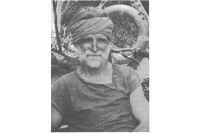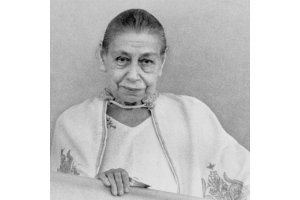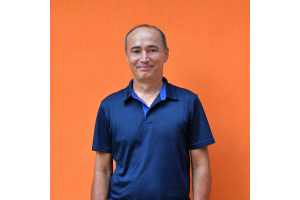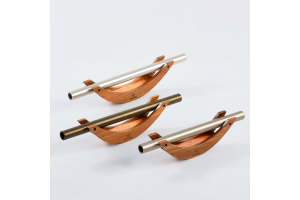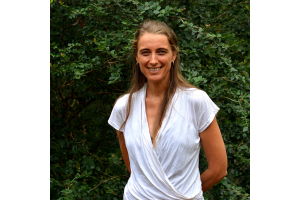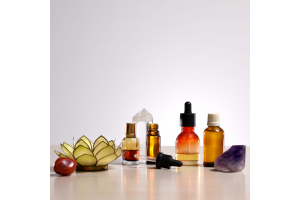Turning Points - An Interview with Johnny
Here is a modified and shortened extract from an interview with Johnny, an Aurovillian, taken from ‘Turning Points; An Inner Story of the Beginnings of Auroville’.
To be perfectly frank, I came here [Auroville] looking for Jan, my wife at the time, and our first child. Our life in Sydney had been pretty turbulent. Although I had been to university and studied architecture, I dropped out of university. It was in the sixties, a very turbulent society, but in the end Jan that I was hopeless and she took Jonas and went to Pondicherry.
She had know about Pondicherry through the Theosophical Society. The Theosophical Society was the only place in Sydney where you could find the writings of Mother and Sri Aurobindo. And it was a place where you could take a cushion and sit on the floor and read books.
When Jan gave up and came to India, she lived in the Ashram, at Parc a Charbon [Guest House]. Our eldest boy Jonas was in class 3 and he went to the Ashram school.
So Jan was there and I was in Australia. I was reading in those days spiritual books and I did know who Sri Aurobindo and the Mother were, but when Jan wrote to me she described Auroville as “a tribal music scene”; I think because she thought this would sound attractive to me.
I often think that many of the first Aurovillians that came had a common experience: somewhere in their lives they had a common contact with Mother somehow. I was right up in the north of Australia where you have deep rainforests, on my birthday, the 2nd of Feb 1970. I got really badly lost. And I really got to a point where I was in such despair that I sat down with my head in my hands, “What is going on?”. And then I got up and when I turned around, there was a gate. This was around 2 o’clock, the time at which Jan said she took my photo to the Mother. For me that was a powerful connecting experience.
When I came here, Jan already had a house on the beach. I had actually come for a week, just to say hello, and if I am not wanted I go. But I came and everybody seemed glad to see me so I stayed.
I worked with a small group of villagers, in particular Ramu from Bommayarpalayam. I must say, the minute I got to India I felt I had come home. I felt at ease with lungis and a big beard. If you have studied architecture, you have many ideas but you never get to do anything. But with bamboo and casurina and keet ropes you can do, and it doesn’t matter what mistakes you make, it is not concrete. I didn’t even think about leaving.
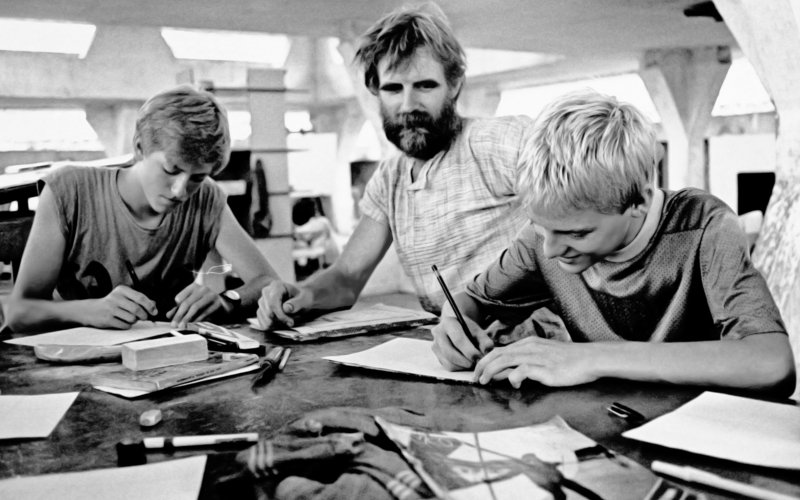
The Aurovillians used to come to the beach on full moons and play music, that’s why the “tribal music”. Jan was very keen that we join. The Entry Group in Pondicherry said “if you are not interested in doing what we are telling you to do, then there is no place for you in Auroville”. I was fine, but Jan was quite upset about this. Then it happened that she had signed a lease for the land where we lived and there was a dispute about the ownership of this land, so we had to leave. I went to see [Shyamsunder, Secretary General of the Sri Aurobindo Society] and asked formally to the Mother whether myself and Jan and Jonas could join Auroville. We got a little note the same day saying it was okay. Because we had bypasses the entry group, we did not get a very friendly feeling coming from them. At that time my daughter Jina was born, so we lived in Pondicherry until she got a bit older. People find it difficult to remember, but you could sit here and look straight out there and there was nothing. Fisherwomen would come over the horizon, sit under this Banyan tree and drink some water. The next tree was a kilometer away. The first trees we planted, the villagers cut and took home for firewood.
We really had to fight for land in the beginning.
The first time I saw the Mother was on my birthday in 1972. You were supposed to take a flower and hand it to her. When your turn comes, you go in and the Mother is sitting on a big chair, and standing beside her is Champaklal, her lion, a small but broad man with a huge white beard. And then she smiles at me…
I personally saw her twice on two birthdays [other times with accompaniment]. I felt a very powerful connection to her. I had the feeling that she knew me, supported me. I remember the day she died. I thought I was dying, actually. I had fever for about a day, pouring sweat when [Bernard Borg] came here riding on his horse and told me.
Picture by Dianna Bowler from 2009.

